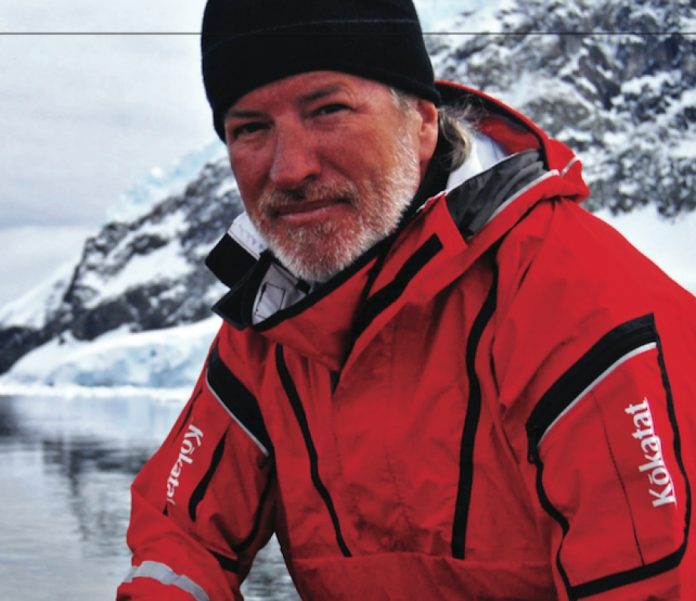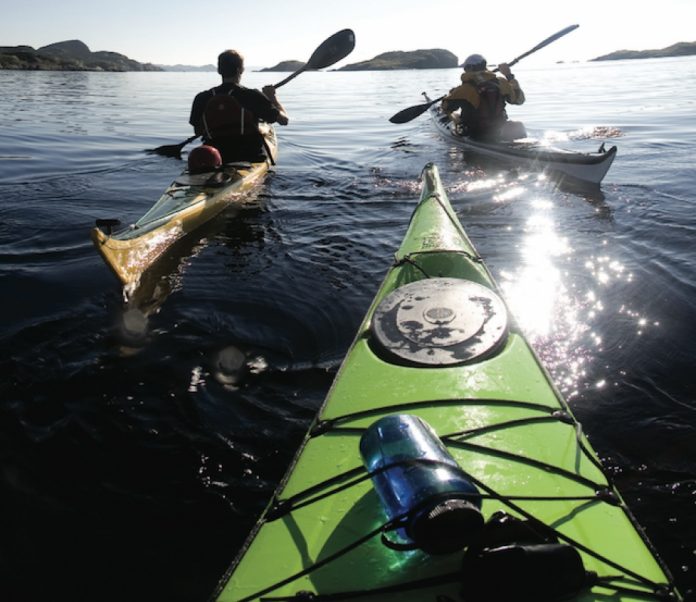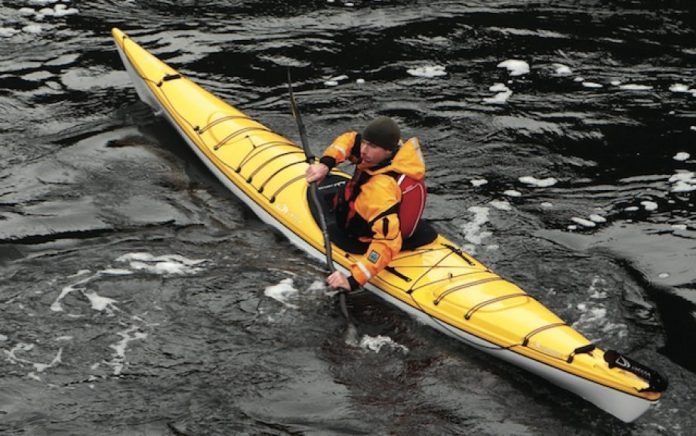Across most of the continent, the 49th parallel fuses two political siblings–Canada and the United States–like Siamese twins. Other than a line on a map and a few well-guarded crossings, it’s not much more than a toe line in the soil.
In Alberta’s Waterton National Park this political boundary becomes more than just a fantasy fence line. Tucked into the extreme southwest pocket is Boundary Creek, a liquid no-man’s-land that skirts back and forth along the two nations’ border. It has never smelled smuggled tobacco or twisted a barrel of bootleg moonshine because this Alberta-to-Montana crossing is self-regulating: it’s a class V run.
“Running Boundary Creek is a full-day commitment,” said Spencer Cox, one of a team of four who were the first to storm the border in the high spring runoff of 2006. “To get there you have a long flatwater paddle, a longer slog up a horse trail and to end it all, an illegal border crossing.”
Cross border kayaking
Like any crossing, you have to go through Customs first. That leads directly into the full-on class-V Cavity Search; eddy left at the bottom of the rapid and this is a straightforward domestic run. Eddy right and you’ve just paddled into foreign waters (unless of course you’re American, in which case you’re home).
“The scoured bedrock drops and crystal clear blue water make it a classic example of steep creeking in the Canadian—or is that American— Rockies,” Cox says.
The creek ends four kilometres later when it spills into the U.S. side of Waterton Lake. Paddling down the lake a few hundred yards gets you back into Canadian waters.
Chris Goble, who discovered the run, managed to enlist Cox, David Faubert and Joel Fafard for a first descent of the creek in spite of the international security risk. Now with the initial run made and passport laws relaxing ever-so-slightly to allow those wonderful, tiny, waterproof driver’s licence cards, the Treasure State of Montana could see a rash of border jumping creekers paddling toward her other jewels.
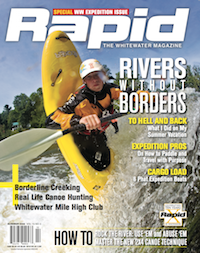
This article first appeared in the Early Summer 2008 issue of Rapid Magazine.





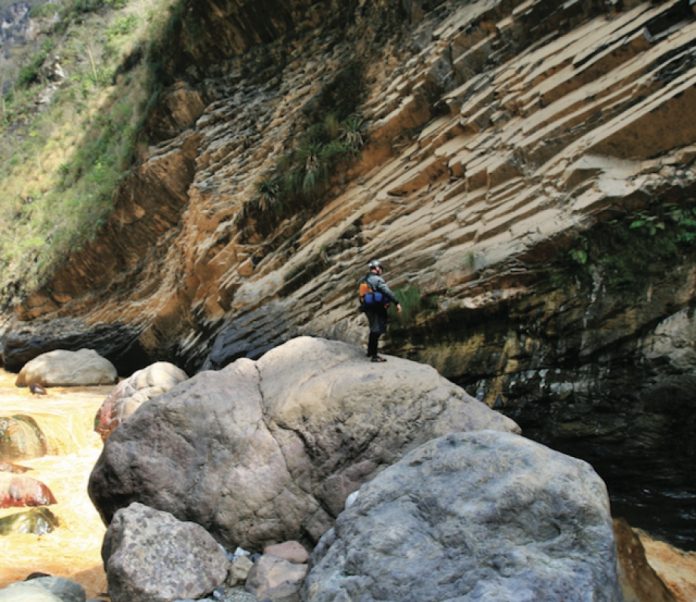
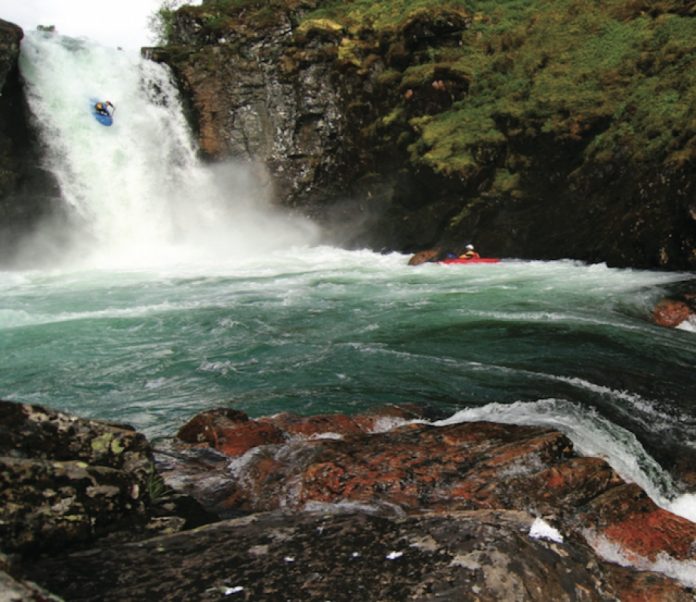
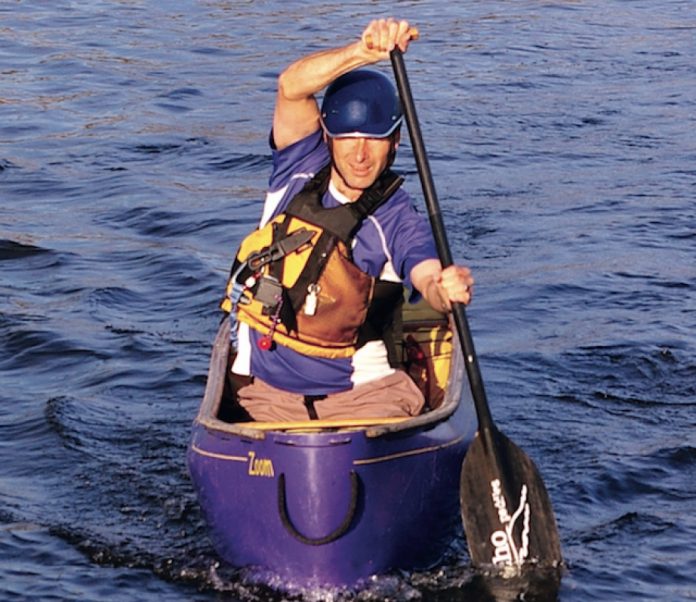
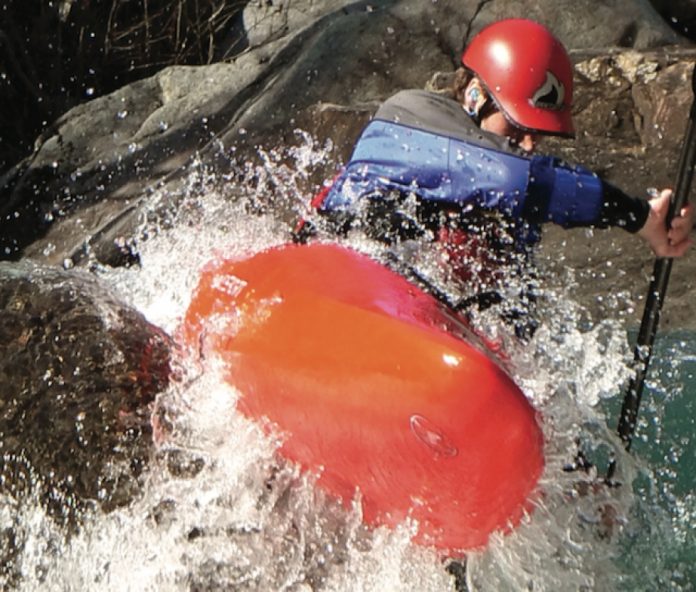
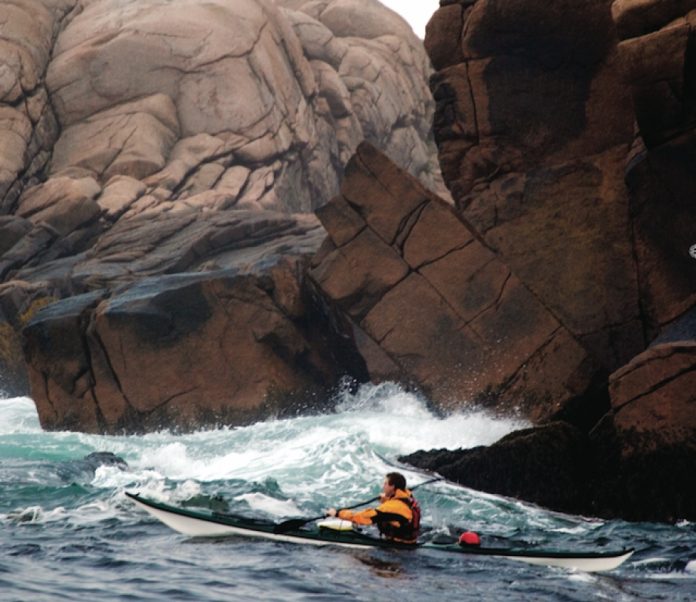


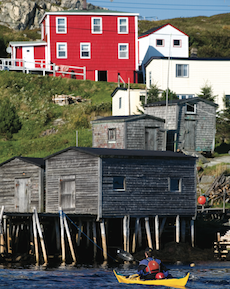 We spend two days at Cape La Hune not because of miserable weather—by now the Southwest Coast is fully enveloped in a 1,025-millibar high—but because it’s so hard to leave. Hiking up the breadbox-shaped peak behind the campsite oc- cupies an afternoon with scrambling up sloping rocks and crashing through tuckamore thickets of dwarf birch and fir trees. From the top, the Atlantic stretches uninterrupted to Antarctica, save for the inconspicuous dots of the French islands of St. Pierre and Miquelon to the south- east. Facing inland, La Hune Bay cuts a granite corridor through a sweeping expanse of tucka- more and barrens. On the treacherous descent I find an old threadbare rope—proof that the Cape La Hune outporters did more than just fish. Later on, I watch the moon rise over the rockbound coast from within the foundation of the old church, imagining the building itself departing on a barge bound for the horizon.
We spend two days at Cape La Hune not because of miserable weather—by now the Southwest Coast is fully enveloped in a 1,025-millibar high—but because it’s so hard to leave. Hiking up the breadbox-shaped peak behind the campsite oc- cupies an afternoon with scrambling up sloping rocks and crashing through tuckamore thickets of dwarf birch and fir trees. From the top, the Atlantic stretches uninterrupted to Antarctica, save for the inconspicuous dots of the French islands of St. Pierre and Miquelon to the south- east. Facing inland, La Hune Bay cuts a granite corridor through a sweeping expanse of tucka- more and barrens. On the treacherous descent I find an old threadbare rope—proof that the Cape La Hune outporters did more than just fish. Later on, I watch the moon rise over the rockbound coast from within the foundation of the old church, imagining the building itself departing on a barge bound for the horizon.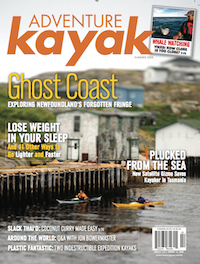 This article first appeared in the Summer 2008 issue of Adventure Kayak Magazine. For more great content, subscribe to Adventure Kayak’s print and digital editions
This article first appeared in the Summer 2008 issue of Adventure Kayak Magazine. For more great content, subscribe to Adventure Kayak’s print and digital editions 